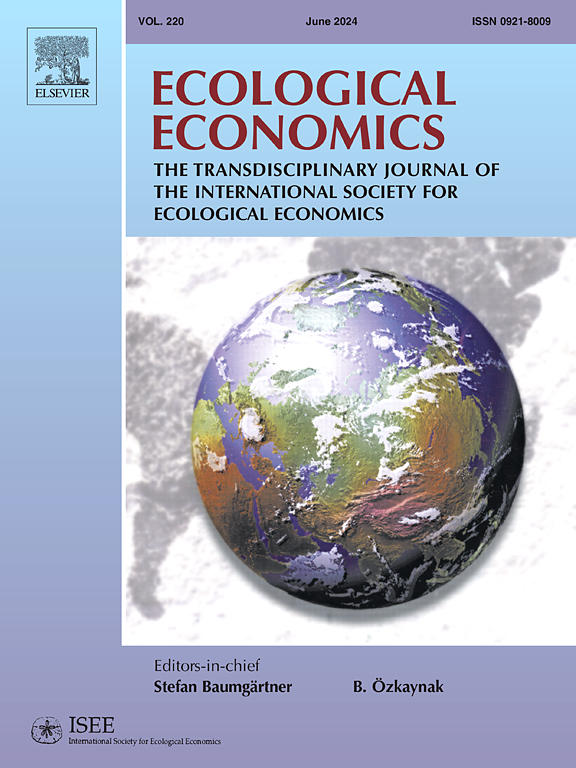从生产系统到消费系统的动态全球铝使用
IF 6.3
2区 经济学
Q1 ECOLOGY
引用次数: 0
摘要
全球铝工业传统上以高能耗和高排放而闻名。在这个行业实现循环和非物质化需要生产和消费双方的共同努力。本研究结合了动态物质流分析和环境扩展的多区域投入产出分析,追踪了2007年至2017年九个地区的全球人工智能使用情况。结果显示,中国在2001年成为最大的人工智能消费国,在50年里使用了约460亿吨人工智能(占全球使用量的26%),主要出口到北美和欧洲。交通运输和建筑业主导着人工智能的最终用途(约50%),而服务业的份额在2017年上升至17%。虽然目前有关人工智能脱碳的政策主要集中在控制全球人工智能生产上,但未来的政策应以服务业的非物质化为目标,以减少人工智能的间接使用。我们的研究结果突出了重要的地区和部门差异,在制定未来的脱碳战略时必须考虑这些差异。本文章由计算机程序翻译,如有差异,请以英文原文为准。

The dynamic global aluminium use across production systems to consumption systems
The global aluminium (Al) industry is traditionally known for high energy consumption and intensive emissions. Achieving circularity and dematerialisation in this industry requires joint efforts from both, the production and consumption sides. This study combines dynamic material flow analysis and an environmentally-extended multi-regional input-output analysis to track global Al use across nine regions from 2007 to 2017. Results show that China became the largest Al consumer in 2001, using ∼460 Mt. over 50 years (26 % of global use) and exporting mainly to North America and Europe. Transportation and Building & Construction dominate Al end-use (∼50 %), while the service industry's share rose to 17 % in 2017. While current policies on Al decarbonisation primarily focus on controlling the global Al production, future policies should aim the dematerialisation of the service industry to reduce indirect Al use. Our results highlight important regional and sectoral differences, which must be consider when formulating future decarbonisation strategies.
求助全文
通过发布文献求助,成功后即可免费获取论文全文。
去求助
来源期刊

Ecological Economics
环境科学-环境科学
CiteScore
12.00
自引率
5.70%
发文量
313
审稿时长
6 months
期刊介绍:
Ecological Economics is concerned with extending and integrating the understanding of the interfaces and interplay between "nature''s household" (ecosystems) and "humanity''s household" (the economy). Ecological economics is an interdisciplinary field defined by a set of concrete problems or challenges related to governing economic activity in a way that promotes human well-being, sustainability, and justice. The journal thus emphasizes critical work that draws on and integrates elements of ecological science, economics, and the analysis of values, behaviors, cultural practices, institutional structures, and societal dynamics. The journal is transdisciplinary in spirit and methodologically open, drawing on the insights offered by a variety of intellectual traditions, and appealing to a diverse readership.
Specific research areas covered include: valuation of natural resources, sustainable agriculture and development, ecologically integrated technology, integrated ecologic-economic modelling at scales from local to regional to global, implications of thermodynamics for economics and ecology, renewable resource management and conservation, critical assessments of the basic assumptions underlying current economic and ecological paradigms and the implications of alternative assumptions, economic and ecological consequences of genetically engineered organisms, and gene pool inventory and management, alternative principles for valuing natural wealth, integrating natural resources and environmental services into national income and wealth accounts, methods of implementing efficient environmental policies, case studies of economic-ecologic conflict or harmony, etc. New issues in this area are rapidly emerging and will find a ready forum in Ecological Economics.
 求助内容:
求助内容: 应助结果提醒方式:
应助结果提醒方式:


